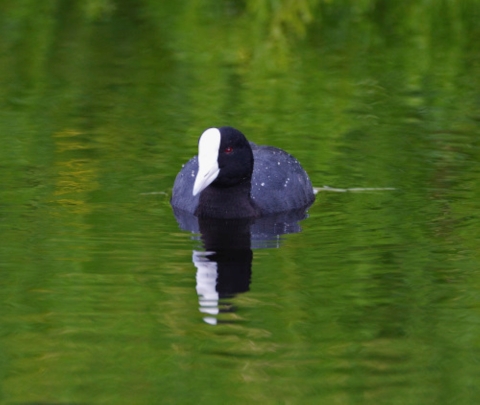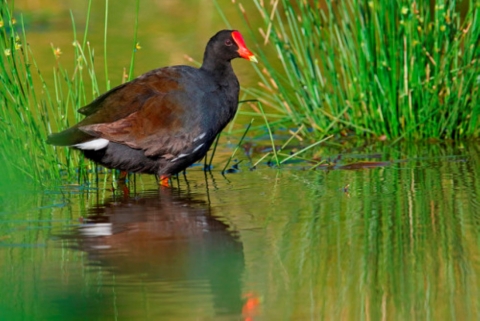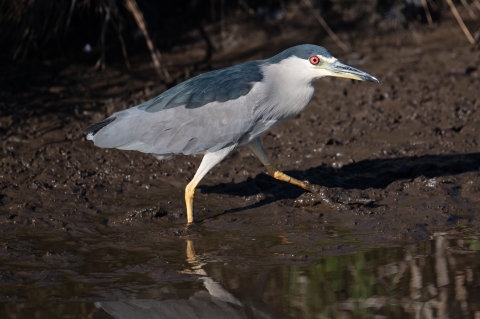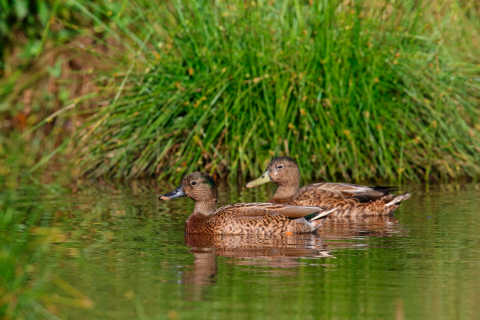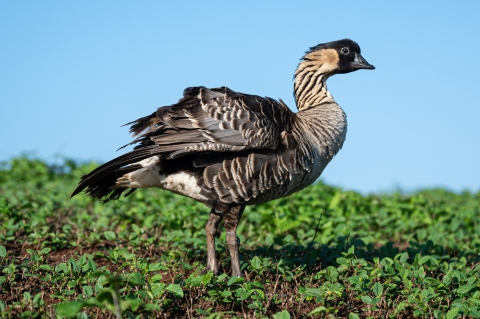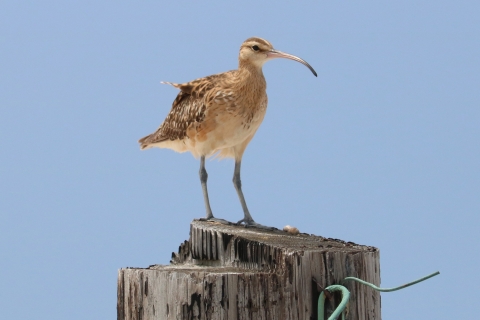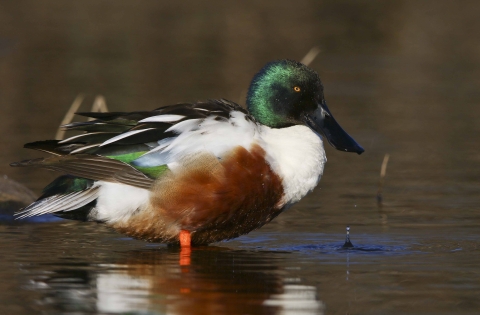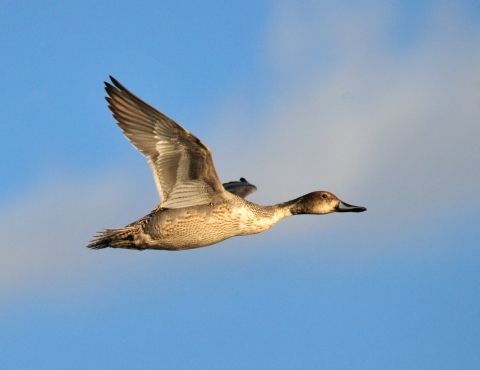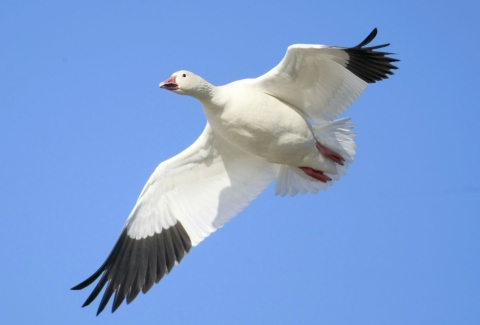Featured Species
Hanalei National Wildlife Refuge was established under the Endangered Species Act to recover threatened and endangered species, including the endangered koloa (Hawaiian duck), ‘alae ke‘oke‘o (Hawaiian coot), ‘alae ‘ula (Hawaiian moorhen), ae‘o (Hawaiian stilt) and threatened nēnē (Hawaiian goose). The Refuge also is home to many other native and migratory species.
Year-Round Native Birds
Ae‘o (Hawaiian stilt, Himantopus mexicanus) ENDANGERED, ENDEMIC The Hawaiian Stilt is a slender wading bird that grows up to 16 inches in length. It has a black back and white forehead. It has very long pink legs and a long black bill. | |
‘Alae ke‘oke‘o (Hawaiian coot, Fulica alai) ENDANGERED, ENDEMIC Hawaiian coots have large feet with lobed toes, unlike the webbed feet of ducks. Immature Hawaiian coots are a lighter gray with buff-tipped contour feathers, have smaller, dull white bills, & lack a well-developed frontal shield. | |
‘Alae ‘ula (Hawaiian moorhen, Gallinula chloropus sandvicensis) ENDANGERED, ENDEMIC The Hawaiian common moorhen is recognized as a distinct subspecies, differing from other races in having a red blush on the front & sides of the tarsus (Taylor 1998). However, there are no evident plumage or measurement differences from forms in North America (Wilson and Evans 1890-1899; Rothschild 1900). | |
'Auku'u (black-crowned night heron, Nycticorax nycticorax) INDIGENOUS Light-gray birds with a neatly defined black back and black crown. They have black bills. Juveniles are brown with large white spots on their wings. Their bills are black and yellow. | |
Koloa Maoli (Hawaiian duck, Anas wyvilliana) ENDANGERED, ENDEMIC The Hawaiian Duck or koloa, is generally mottled brown and has a green to blue speculum (the distinctive feathers on the secondary wing feathers) with white borders. Adult males tend to have a darker head and neck feathers (sometimes green). Both sexes have orange legs and feet. Females have a dull orange bill. The male koloa is 19 to 20 inches in length while the female is 16 to 17 inches. Their quack is a little softer than the mallard and koloa are not as vocal. | |
Nēnē (Hawaiian goose, Branta sandvicensis) THREATENED, ENDEMIC Somewhat similar in appearance to a Canada Goose except only the face, cap, and hindneck are black; and Hawaiian geese have buff-colored cheeks. The front and sides of the neck appear to have black and white stripes. This is caused by diagonal rows of white feathers with black skin showing through. Males and females have identical plumage. |
Migratory Birds
Kioea (Bristle-Thighed Curlew, Numenius tahitiensis) MIGRATORY The bristle-thighed curlew (Numenius tahitiensis) is a medium-sized shorebird. It can be found in Hawai'i in winter. It returns to Alaska each spring for breeding season. | |
Kolea (Pacific Golden-Plover, Pluvialis fulva) MIGRATORY Kolea are abundant in Hawai'i in winter months. They return to the tundra from western Alaska to the Yamal Peninsula in Russia May-Aug. for breeding season. | |
Koloa Māpu (Northern Shoveler, Spatula clypeata) MIGRATORY The northern shoveler is a medium-sized dabbling duck - a duck that feeds by tipping headfirst into shallow water. This species is well-known for its bill, which has a spoon or shovel shape. Because of this unique bill, they have earned the nicknames “spoonbill” and “spoony." | |
Koloa Mōhā (Northern Pintail, Anas acuta) MIGRATORY | |
Snow Goose (Anser caerulescens) MIGRATORY Snow geese breed in the North America, Siberia, and Greenland during summer. During winter they migrate to warmer coastal and inland habitats making frequent stopovers during the long journey. Small numbers of snow geese are spotted most years at Hanalei National Wildlife Refuge during the migration seasons. Snow Geese are vegetarians and will eat nearly any part of a plant including seeds, stems, leaves, tubers, and roots. |




